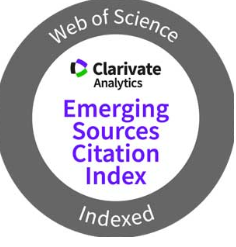THE IMPORTANCE OF ELECTRON MICROSCOPIC EXAMINATION IN DIFFERENTIAL DIAGNOSTICS OF ENDOMETRİAL CANCER WITH ATYPICAL GLANDULAR HYPERPLASIA
DOI:
https://doi.org/10.4238/axsc3a82Keywords:
atypical glandular hyperplasia, endometrial cancer, malignant processes, proliferation, electron microscopicAbstract
Abstract: The article discusses the importance of electron microscopic study in the diagnosis of proliferative changes in endometrial cancer. Cytological studies with the help of electron microscopy are of great scientific and practical importance for the detection of atypical cells
The purpose of the study Determination of the importance of electron microscopic examination in the diagnosis of proliferative changes in endometrial cancer.
Materials and methods. The basis of this research is 132 patients (main group) diagnosed with endometrial adenocarcinoma and 35 patients with atypical glandular hyperplasia of the control group.. Samples of surgical material obtained from patients with uterine cancer were transferred to the electron microscopy laboratory for the purpose of studying them using light and electron microscopy.
Results. The main characteristic features of atypical glandular hyperplasia are producing invaginations of basement membrane, mitochondrial swelling, rough crystals and plumpness of interstitial stromal capillaries. Atypical glandular hyperplasia, deformation of the structure of desmosome in some of the cells in well differentiated adenocarcinoma, decrease in the number of desmosomes in the G2 tumors, and the complete disintegration of the small number of desmosomes in G3 are observed. Degradation of intracellular contacts (desmosomes) in less than 20% of cells in well-differentiated adenocarcinomas, weak nuclear deformation, mitochondrial swelling, and partial fragmentation of crystals are observed. In poorly differentiated tumors, desmosomes are fully degraded in more than 50% of cells, with severe nuclear polymorphism and complete fragmentation of mitochondrial crystals
In general, the results obtained will contribute to the prediction of the course of proliferative processes in our patients.
Published
Issue
Section
License
Copyright (c) 2025 Genetics and Molecular Research

This work is licensed under a Creative Commons Attribution-ShareAlike 4.0 International License.



